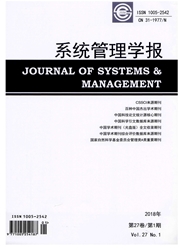

 中文摘要:
中文摘要:
基于动态规划思想,使用最优停时方法研究了不确定的市场条件下,企业依次兼并两家目标公司的兼并次序和兼并时机问题。通过假设实现协同效应所需时间服从负指数分布来表征兼并后的整合风险,基于此建立了序贯兼并的最优停时模型,分析了沉没成本分阶段支付对序贯兼并决策的影响,并确定了扩张型序贯兼并的次序选择原则。研究发现,最佳兼并时机随着整合风险的增加而推迟;对于扩张型序贯兼并而言,兼并次序选择取决于沉没成本、谈判能力、企业规模、兼并协同度和整合风险等因素的权衡;分期逐额支付沉没成本能够提高企业的兼并积极性,加速兼并的实施。
 英文摘要:
英文摘要:
We study the sequencing and timing of dual-targets merges based on optimal stopping by dy namic programming. Assuming the time needed to realize the synergies is exponentially distributed to re- present the consolidation risk, we build an optimal stopping model of sequential mergers, and analyze the effect of sunk costs on sequential merge decision. The results show that the optimal timing of sequential merges is delayed when the consolidation has high risks, moreover, in respect of the expanded sequential merges, the sequence of merges is determined by the tradeoff among such factors as the cost, bargaining power, scale, synergic degree and consolidation risk. It is also shown sunk costs paid may boost the bid- ding enthusiasm and accelerate the mergers.
 同期刊论文项目
同期刊论文项目
 同项目期刊论文
同项目期刊论文
 期刊信息
期刊信息
